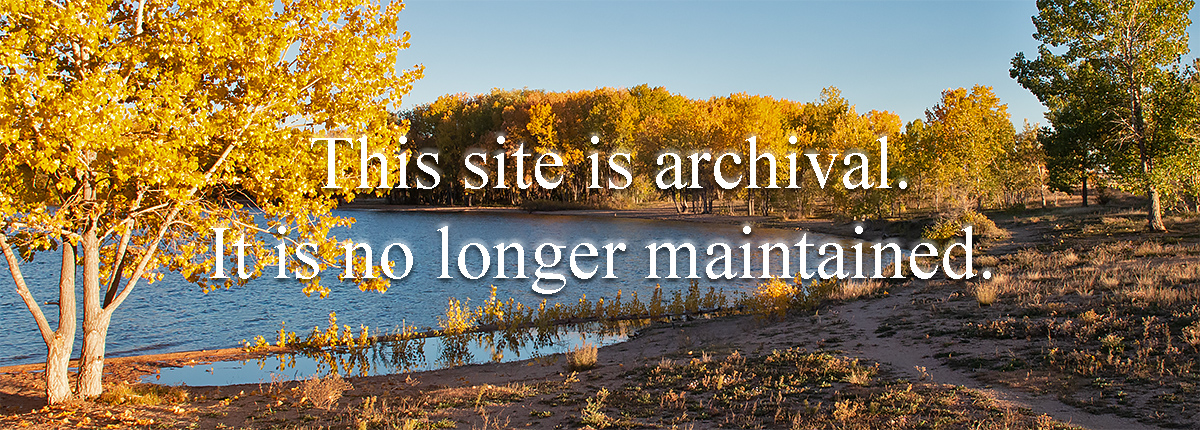Identify yourself: “I am a user of Chatfield State Park” or “I am a potential beneficiary of the water supply system and I have a direct stake in this decision”, or “I am a concerned citizen of ________ and do not agree with plans to increase the water level at Chatfield”, etc. Then state “I would like to submit the following comments on the Chatfield Reallocation EIS.”
List how you use the park: (if applicable): for example, “I walk, hike, bike, bird watch, stream fish, water-ski, canoe, camp,” etc. Use personal descriptors like “I enjoy the solitude under the large trees” or “I feel so at peace when I walk through the cottonwood forest” or “I have such fun with my grandson as we search for frogs along the river’s edge”.
Describe the Resources you especially value: For example, “large mature trees with shade, cottonwood forests with rich diversity of plants/animals, shaded stream-side paths, natural waters edge with frogs and crayfish, wetlands habitat with unusual plants, the abundance of birds,” etc. Be as specific as you can.
Describe the NEGATIVE impact to you if the above resources go away: For example, “I will no longer visit the park” or, “the trees will be destroyed in my favorite section of the South Platte”, or “I will no longer be able to ride my bike along the shady forested stream side”, or “residents have a right to enjoy and protect natural areas that cannot be replaced”, etc.
Take a position: For example, “I recommend that you NOT approve this project because the impacts to Chatfield State Park are so substantial. Less damaging alternatives to water supply exist.”
Give your reasons: For example:
- Massive impacts: deforested and barren stream and lake’s edge with mud flats and “bathtub ring” effect, loss of valuable riparian forest habitat and the recreation that depends on it. Destroyed habitat like century-old cottonwoods and free-flowing stream segments on the South Platte River, Plum Creek and Deer Creek cannot be replaced.
- Alternatives are weak. It doesn’t appear that other alternatives for water supply received serious consideration. Examples: aquifer storage and recharge, increased water conservation, gravel pit storage and/or expansion and use of existing water storage facilities in the vicinity of Chatfield such as Reuter-Hess reservoir or some combination of these.
- The selected plan (Alternative 3) is the MOST environmentally damaging alternative, whereas federal law – the Clean Water Act – specifies that only the LEAST damaging alternative is permissible.
- The selected plan will not provide a dependable source of water. In Appendix BB, the EIS lists five common measures of dependable yield for reservoirs and then states: “At Chatfield, all of these measures of dependable yield are 0.” The sacrifice of this rich bio-diverse habitat is NOT worth the benefit of an unreliable water supply.
- On May 15, 2013, Governor Hickenlooper issued an executive order directing the Colorado Water Conservation Board to create a Colorado Water Plan. No decision should be made about Chatfield until that plan is complete.
- Value of Chatfield for recreation and wildlife. Example: it has been designated an Important Bird Area by the National Audubon Society. The EIS however leaves out a number of bird species that occur there and contains several misstatements about bird species that breed there. A survey of breeding birds was done at inappropriate times of year and day.
- Tell what kinds of recreation you enjoy there and its value to you.
- The document is huge; we need more time to review it – at least 60 days more.
Summarize: Example: Chatfield State Park is a unique recreational and biological resource. We must find an alternative that meets water supply needs but preserves the Park’s integrity. Alternative 3 is too damaging and I recommend you reject it.
Thanks: Thank them for the opportunity to comment.
